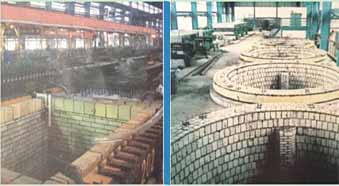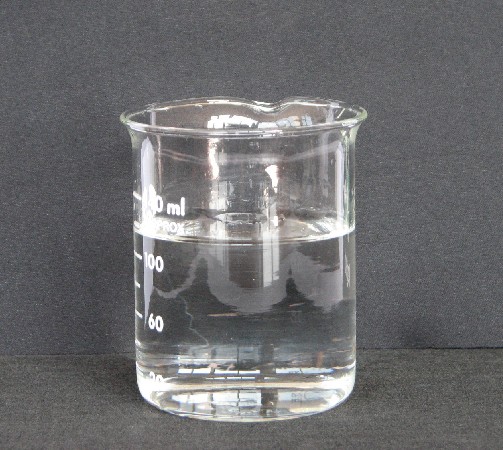1. Introduction of potassium silicate for anti-corrosion
2. The constitution of potassium silicate anti-corrosive materials
3. Technical indicator
4. The construction of potassium silicate anti-corrosive materials
5. The application range of potassium silicate anti-corrosive materials
1. Introduction of potassium silicate for anti-corrosion
This type of potassium silicate produced by our company applies to acid proof and anti-corrosive construction in various environment. It can be made into potassium silicate clay, potassium silicate mortar and potassium silicate concrete according to different uses.
The acid proof material made from potassium silicate has many advantages like high impermeability, high viscosity, excellent water resistance and impact resistance, which make it incomparable as sodium water glass’s updated product. Its main advantage is the high application temperature. In anti-corrosive construction, it could resist may different levels of acids(some acid-medium acids such as sulfuric acid, nitric acid, chromic acid, hypochlorous acid, chlorosulfonic acid, formic acid, oxalic acid, etc.) and electroplating liquid or electrolyte, etc.
Potassium silicate clay, potassium silicate mortar and potassium silicate can be mixed with clay powders to be used in building anti-corrosion, whole floor construction, bulk surface course construction, and the construction of chimney, flue, acid proof storage groove, floor, etc. like paving, slot filling, or layer covering. At present, it is one of the most ideal acid-resisting and anti-corrosive materials, but it shall not be used in parts with alkaline media or with salt media where alkaline reaction appears.
2. The constitution of potassium silicate anti-corrosive materials
Potassium Silicate Clay= Potassium silicate +KP1 clay powder
Potassium Silicate Mortar= Potassium silicate +KP1 mortar powder
Potassium Silicate Concrete=Potassium silicate +KP1 concrete +quartz stone
3. Technical indicator
Potassium silicate anticorrosion material batching (by weight)
|
||||||||||||||||||||||||||||||||||||||||||||||||||||||||||||||||||||||||||||||||||||||||||||||||||||||||||||||
Corrosion resistance properties of potassium silicate material:
|
||||||||||||||||||||||||||||||||||||||||||||||||||||||||||||||||||||||||||||||||||||||||||||||||||||||||||||||
Physical and mechanical properties of potassium silicate material
|
||||||||||||||||||||||||||||||||||||||||||||||||||||||||||||||||||||||||||||||||||||||||||||||||||||||||||||||
4. The construction of potassium silicate anti-corrosive materials
Requirements for the base-layer
Surface treatment to the base-layer of the anti-corrosion engineering for potassium silicate material should be carried out according to the ‘regulations for construction and acceptance check of building and anti-corrosion engineering ’, in which it requires the surface has to be cleaned before construction with the dry steel base-layer sand blasted and rust removed. When preparing the materials, you should stir completely and homogeneously and make sure that the mixture is used up thirty minutes after the potassium silicate is put in. Please stop if coacervation and caking occur in the process.
Proper temperature for the construction is between 15℃ and 35℃, with a relative humidity lower than 80%, a temperature higher than 10 ℃, otherwise you have to take some heat preservation measures. Try any means to keep the materials from damp in storage and transportation. Do make them away from water, vapour and other sundries during construction and curing period.
After that, it should be shelled out every twelve hours for four times with sulphuric acid of 40%-60% or hydrochloric acid of 20%-25%. For potassium silicate mortar and potassium silicate concrete, the construction of monolithic floor surface should have divided boxes with a diving joint of 2-3mm space and 12-16mm seam. Use water glass clay or water glass mortar to fill up after the casting and solidifying.
Methods of construction:
|
Types of bulk |
Thickness of combination(mm) |
Width of seam (mm) |
|||
|
clay |
mortar |
clay |
mortar |
||
|
Typomorphic acid-resisting ceramic tile plate |
thickness<20 |
5-10 |
5-10 |
3-5 |
3-5 |
|
thickness≥20 |
10-15 |
10-15 |
4-6 |
4-6 |
|
|
Typomorphic acid-resisting vitrolite |
5-7 |
|
3-4 |
|
|
|
granite slab |
|
10-15 |
|
10-15 |
|
The potassium silicate mortar should be smeared in different layers, the thickness of which is supposed to be kept between 5mm to 7mm when straight smeared. Make sure that the smearing is consistent and firm from the top to the bottom. Additionally, don’t smear the next layer before the previous layer is concreted. In flat paving, the smearing should be made in one direction and the total thickness must be in accordance with the requirements of design. After the potassium silicate mortar surface is concreted, it should be covered by potassium silicate clay with a thickness of 3-5mm and make the masculine and feminine elements angle oblique and round.
The construction of concrete: the mould should be firmly supported, the seam should be narrow, and the surface should be flat with mold discharging agent. The casting of concrete should meet the following requirements: make it firm with shaking and stirring. When the vibrorammer is used in the casting, the thickness of each layer should be kept within 150-200mm. The vibrorammer has to be taken out slowly in case holes appear. When slab vibrorammer is used or the work is done by hand the thickness of each layer should be kept under 150mm. The casting of anti-resisting groove is supposed to be finished within one time and the construction seam, if necessary, should be 500mm above the base plate.
The flatness and slope should be strictly controlled when the ground is cast. The flatness can be measured by a 2-meter ruler and the gap is not allowed to be over 4mm; the slope should meet the requirements of design with a deviation lower than 0.2%, which can be eliminated when the ground is poured by water.
Form removal time for concrete in different environment:
15-20℃≥6days and nights
21-30℃≥4days and nights
31-35℃≥3days and nights
After the form removal, the concrete has to be removed where there appear defects like honeycomb, pitting surface or fissure and get it fixed with clean potassium silicate clay.
Potassium silicate materials are suitable for the masonry of acid-resisting bricks, slabs and other acid-resisting stones. They are also the ideal materials to make pool, groove, storage tank, brick kiln, reaction kettle and acid-resisting floor.
5. The application range of potassium silicate anti-corrosive materials
At present, water glass is the most widely used inorganic chemistry binder in casting production. Potassium silicate material can be used in the anti-corrosive surface courses of a building like building floor, wainscot and building trench. It can also work as the anti-corrosive surface of reaction kettle, storage tanks, tower, pool, groove, brick kiln, flue pipe and chimney. It’s well applied in acid media(except fluoric acid) and parts with salt media of acid reaction, but make sure that it’s not used in parts with alkaline media or with salt media of alkaline reaction.
The liquid phase applied temperature of potassium silicate material can reach 350℃, and it has a temperature up to 1000℃ when thermostable bulk lining is paved with potassium silicate clay in vapor phase corrosive media. The thickness of the mortar’s whole surface course should be 10-20mm and that of the concrete’s whole surface course should be 40-60mm. The whole surface courses’ stretching gap of potassium silicate mortar and concrete is not supposed to be over 9m and the seam should be 12-16mm, filled up with anti-corrosion elastic materials.
Potassium silicate materials are suitable for the construction of acid-resisting bricks, slabs and other acid-resisting stone. POTASSIUM SILICATEPOTASSIUM SILICATE
Potassium Silicate for Anticorrosion Use Cases

Potassium silicate anti-corrosion materials are suitable for the construction of acid-resisting bricks, slabs and other acid-resisting stone. They are also the ideal materials to make pool, groove, storage tank, brick kiln, reaction kettle and acid-resisting floor.

